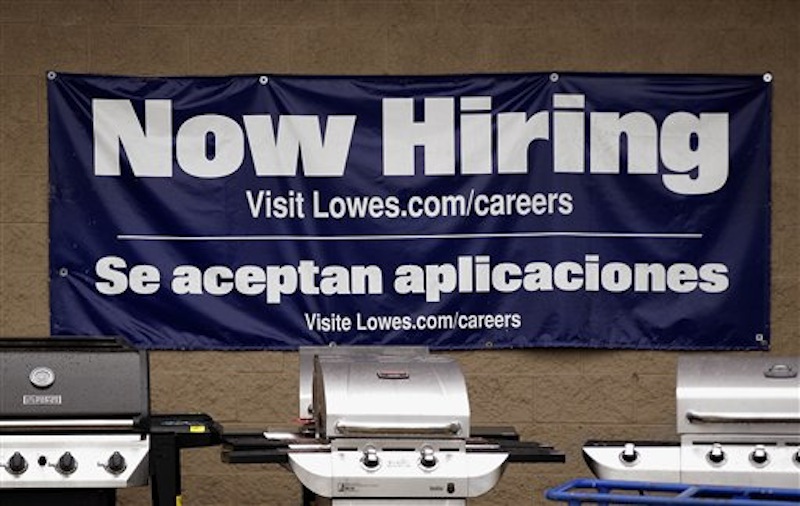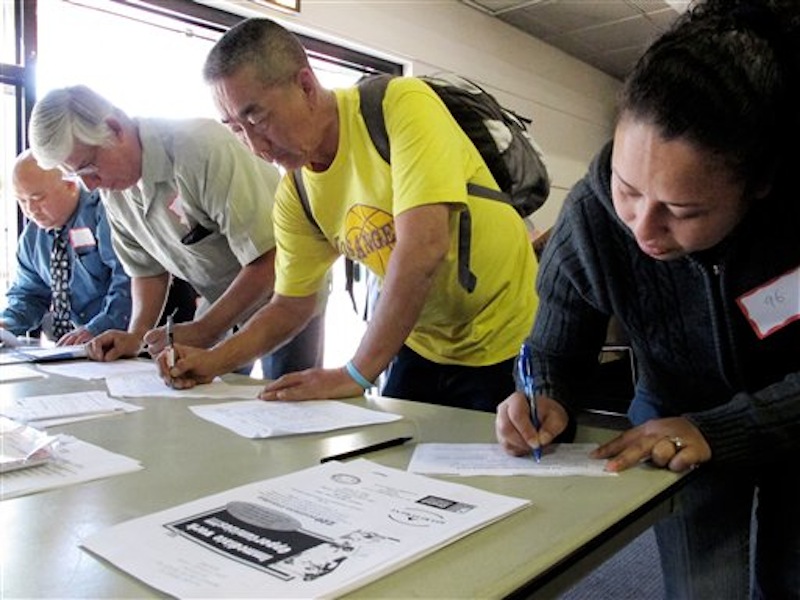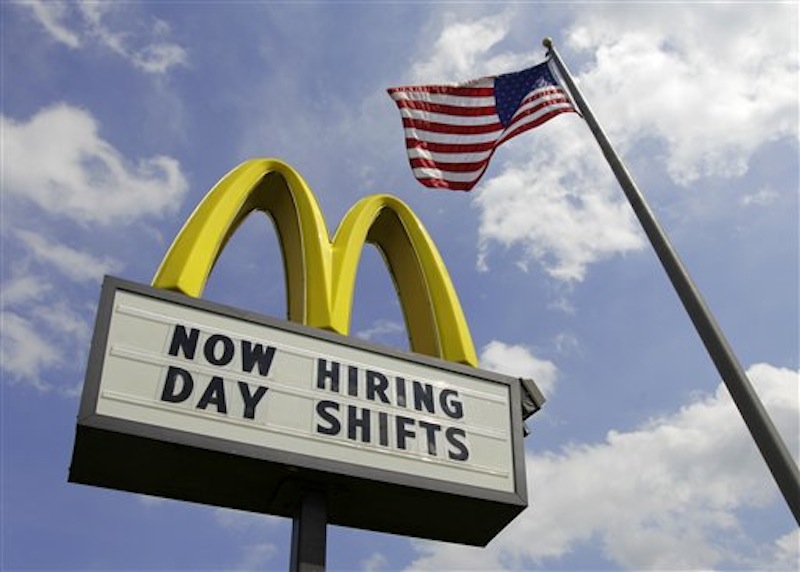WASHINGTON — U.S. companies in March posted the highest number of job openings in nearly four years, a sign that hiring could strengthen in the coming months after slowing this spring.
The Labor Department said Tuesday that employers advertised 3.74 million job openings in March. That’s up from a revised 3.57 million in February and the most since July 2008, just before the financial crisis erupted.
The increase in U.S. job openings suggests that weaker hiring gains in March and April could be temporary. It usually takes one to three months for employers to fill openings.
Even with the increase, roughly 12.7 million people were unemployed in March. That means an average of 3.4 people competed for each open job. While that’s far better than the nearly 7-to-1 ratio when the recession ended. In a healthy job market, the ratio is usually around 2 to 1.
Last week the government said employers added just 115,000 jobs in April and 154,000 in March. That was a sharp decline from December through February, when the economy added an average of 252,000 jobs per month.
Some of the slowdown in job growth in March and April may reflect a payback for unusually warm winter. The warmer weather probably exaggerated job growth in the winter months and is now making the spring gains look smaller.
Jared Franz, an economist at T. Rowe Price in Baltimore, said that increase in job openings was evidence that “steady labor market healing continues.”
Steven Ricchiuto, chief economist at Mizuho Securities, said the report was consistent with gains of 175,000 jobs per month.
Tuesday’s report, known as the Job Openings and Labor Turnover survey, or JOLTs, showed that more people quit their jobs in March.
More quits are a good sign because most people quit in order to move to a new job. Rising quits suggest workers are finding more opportunities in the job market.
Nearly 4.36 million people were hired in March, slightly fewer than in February. The JOLTs report measures gross job gains, while the monthly jobs reports are net figures that are calculated after subtracting layoffs and quits.
The increase in openings reflected gains in two sectors vital to the economy’s health: manufacturing and construction. In March, factories advertised 55,000 more openings, while construction firms posted 23,000 more openings.
However, government job openings decreased by 26,000. The majority of the decline was at the state and local level, where governments continue to face budgetary pressures.
The unemployment rate has fallen a full percentage point since August to 8.1 percent last month — the lowest level since January 2009.
Still, 8.1 percent unemployment is painfully high. And part of the reason for the decline is more people gave up looking for work. People who are out of work but not looking for jobs aren’t counted among the unemployment.
Many people with jobs are seeing little in the way of pay increases.
The employment report on Friday showed that the average worker’s hourly pay rose by just one penny in April. Over the past year, average hourly pay has ticked up 1.8 percent to $23.28. Inflation has been roughly 2.7 percent. Which means the average consumer isn’t keeping up with price increases.
Send questions/comments to the editors.






Success. Please wait for the page to reload. If the page does not reload within 5 seconds, please refresh the page.
Enter your email and password to access comments.
Hi, to comment on stories you must . This profile is in addition to your subscription and website login.
Already have a commenting profile? .
Invalid username/password.
Please check your email to confirm and complete your registration.
Only subscribers are eligible to post comments. Please subscribe or login first for digital access. Here’s why.
Use the form below to reset your password. When you've submitted your account email, we will send an email with a reset code.